GOING LIVE
Lubin Pfeiffer looks at the latest major advance in echo sounder technology.
For ward-facing sonar technology is the biggest change in freshwater fishing since the introduction of electric motors.
It has been a very controversial one as well! For ward-facing sonar is much the same as having an underwater spotlight on the front of your boat; rather than just being able to see what you’ve just passed over like with older sounders, you can now see what is in front of you, in real-time.
I was hesitant at first because I wasn’t sure about exactly what benefits the live technology would provide to my fishing. There are a few different models on the market from the big players, such as Garmin, Hummingbird and Lowrance. Each has its positives, so it was a bit of a hard call to know which would be the best option. After deciding on the Lowrance Active Target, it was time to dive deep into the wormhole that is forward-facing sonar.
INSTALLATION
There are a couple of different ways I have seen people installing their sonar, but the most suitable without a doubt for the styles of fishing I do was to install the transducer on a separate pole at the front of my boat. It didn’t take long at all for the pole set-ups to come on the market, so it was an easy installation with the use of a kit from Transducer Poles Australia. Because of the weight of the pole and the fact that you are swinging it around, the mounts need to be fairly strong. So, with the use of some sizeable bolts and a backing plate, I was able to get it sitting nice and sturdy up the front of the boat. You need to keep in mind that you will be spending a fair amount of time standing in one spot, so pick a comfortable place.
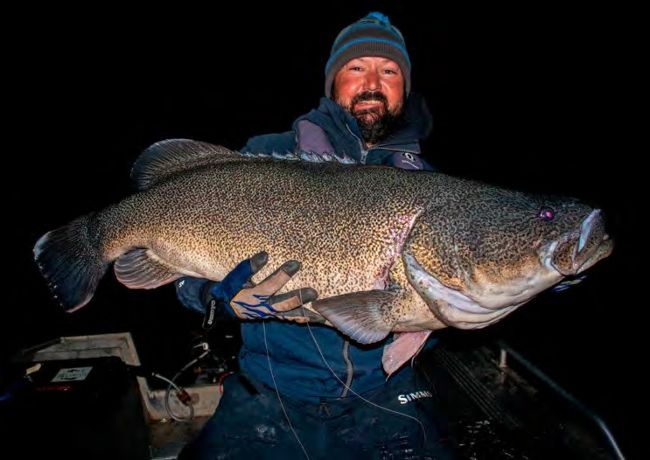
Big cod are prime live target candidates
My boat is an all-rounder, so I wanted to be able to still remove the pole when I do ocean fishing or other types of angling that don’t require the sounder. That way it wouldn’t get destroyed too quickly. My current set-up has a quick-release bracket, which is super easy and quick to remove. The head unit, which I placed up the very front of my boat, is just screwed into the wooden floor, making it easy to remove when I need to. The other component you need to install is the amplifier, which is under the floor and permanently fixed. Battery power is a big one because the whole set-up does use a bit of power while running, so I decided to go with its own separate 100amp/hr battery. This gives me about two or so days of fishing and this way I never drain the motor battery and get caught out on the water.
PRACTICE MAKES PERFECT
Now that I had the sonar all fitted and ready to use, I was expecting to go out and scan and cast to fish left, right and centre! Well, I can tell you this was definitely not the case! I quickly gained a huge respect for anglers who were having a lot of success with it because using it effectively it is not as easy as it looks. Learning in fishing is hugely important, and it was going to take me a while to get the hang of all of this. In all honesty, the live technology took more than 12 months to have any real benefit in my fishing.
Success came when I learned what types of fishing it would help. The first big light bulb moment was chasing redfin in Lake Konongwootong just across the border in Victoria. Instead of traditionally searching with a down scan or searching with a lure, I was able to drive at almost full noise with the electric motor around the middle of the lake, scanning the transducer like a spotlight and then spotting schools of fish. Before I drove anywhere near them, I could make a cast, see the lure fall towards the school and then watch them eat it! It was very cool to watch, that was for sure. The next moment was at Rocklands Reservoir chasing golden perch, where I could search with lures as I normally would, but locate fish that I would’ve completely missed cruising and make a targeted cast to them.
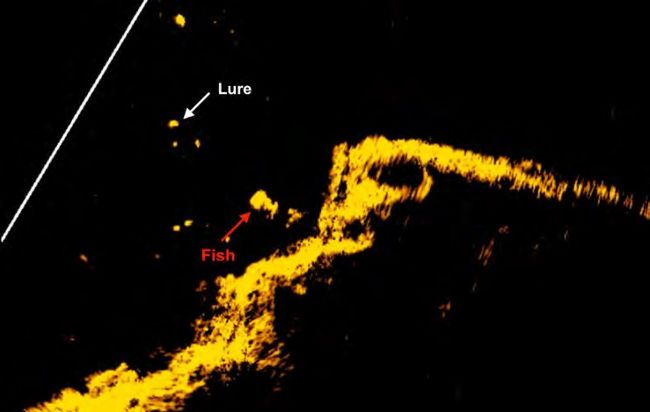
Being able to see both the fish and your lure is gold!
GOING LIVE
Knowing when and where to use live sonar has been the biggest key to getting the best out of the technology. There is no doubt some places are best fished “old school”, such as shallow weed beds or dense timber, as it is much quicker to do so. Where I’ve found live sonar to be most beneficial is covering large amounts of water where I would usually have blind fish methodically. It is a big change in your fishing because you need to trust the technology that it is going to show you the fish, and you will feel like you are wasting time not casting. However, the more you do, the more confident you become. I have learned a huge amount about waterways and, more often than not, the reason the fishing is tough is because there are actually no fish around. Without live sonar you would normally just continue in the hope one might jump out.
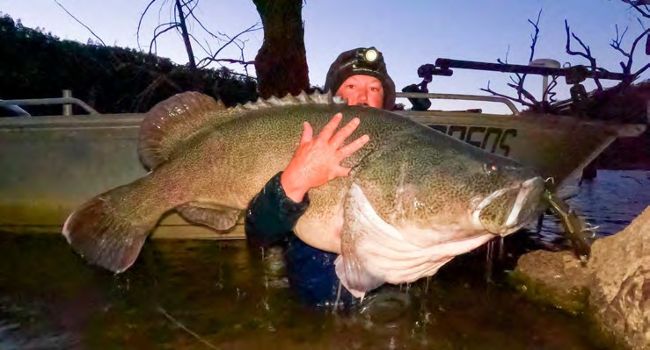
A superb live target victim for the author
There are two different modes I use with live sonar, depending on the fishing I’m doing. The first and most used is the forward-facing mode. This is a narrow-width beam but goes deep. I like to set my unit for 10m depth and a forward range of 30m. The Active Target 2 is pretty good for a range out to 20-25m, depending on the depth of water. By keeping the depth set at 10m, you’ll soon be able to gauge what size fish you are casting at. The other mode I like to use is ‘scout’ mode, which is a wide beam that only goes to around 3m of depth. On my last trip to Queensland live sonar on scout mode was incredible on the lakes while jerk baiting for barramundi. Scout mode is great for fish that are moving within a few metres of the surface. Being able to track the fish, make a cast, and rip a suspending jerk bait into the zone and watch it get eaten was unreal fun.
There’s no doubt live sonar has become an integral part of some of my fishing, but I still really enjoy fishing without it. It is certainly going to be interesting to see what the sounder companies come up with next!
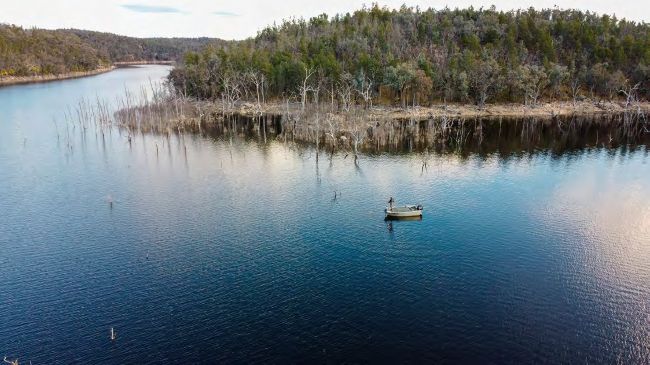
Prospecting snags is much easier with the new technology
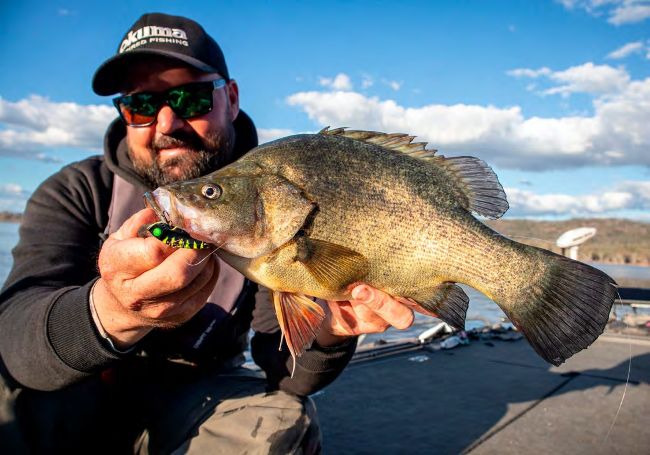
Big callop show up pretty well too